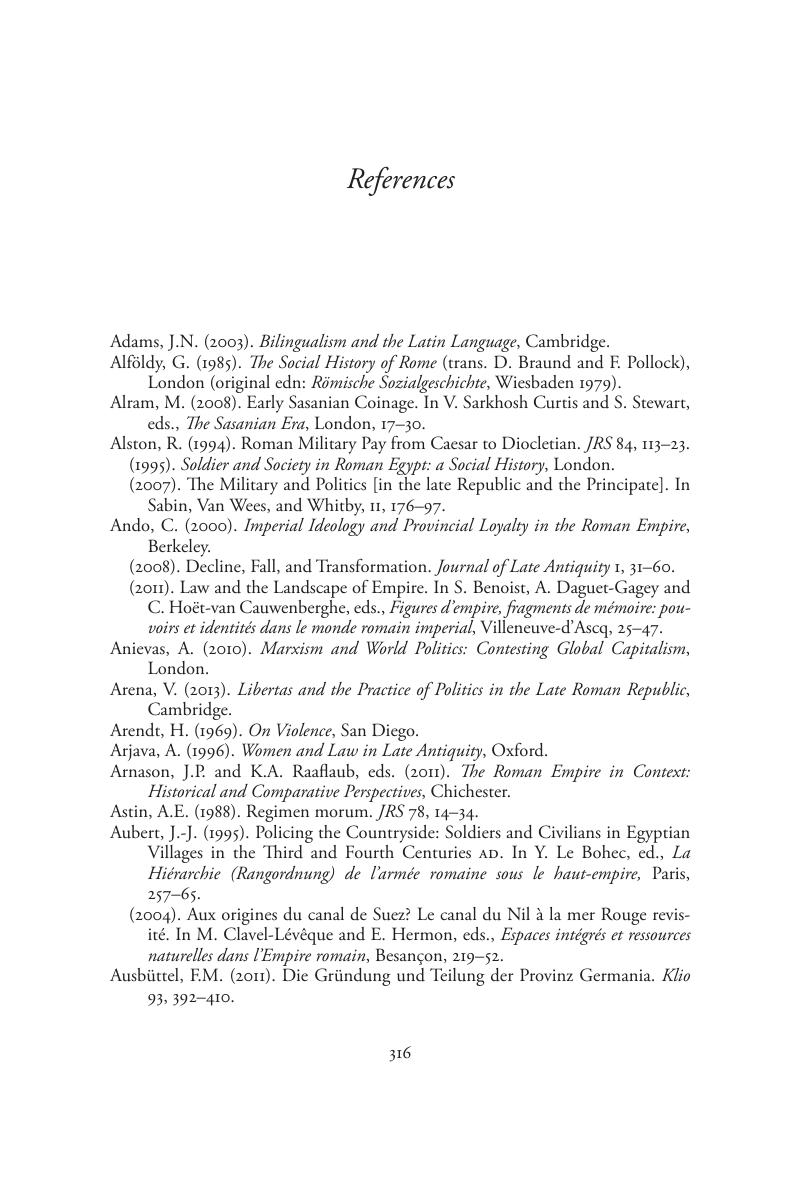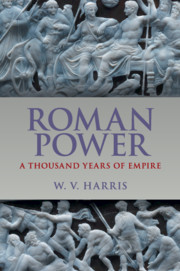Book contents
- Roman Power: A Thousand Years of Empire
- Roman Power
- Copyright page
- Dedication
- Contents
- Illustrations
- Maps
- Preface
- Timeline
- Glossary
- Chapter 1 The long-term evolution of Roman power
- Chapter 2 The Romans against outsiders, 400 bc to ad 16
- Chapter 3 The Romans against each other, from republic to monarchy
- Chapter 4 The Romans against outsiders, ad 16 to 337
- Chapter 5 The Romans against each other: from empire to nation?
- Chapter 6 The Romans against outsiders, ad 337 to 641
- Chapter 7 The Romans against each other in two long crises
- Chapter 8 Retrospect and some reflections
- References
- Index
- References
References
Published online by Cambridge University Press: 05 July 2016
- Roman Power: A Thousand Years of Empire
- Roman Power
- Copyright page
- Dedication
- Contents
- Illustrations
- Maps
- Preface
- Timeline
- Glossary
- Chapter 1 The long-term evolution of Roman power
- Chapter 2 The Romans against outsiders, 400 bc to ad 16
- Chapter 3 The Romans against each other, from republic to monarchy
- Chapter 4 The Romans against outsiders, ad 16 to 337
- Chapter 5 The Romans against each other: from empire to nation?
- Chapter 6 The Romans against outsiders, ad 337 to 641
- Chapter 7 The Romans against each other in two long crises
- Chapter 8 Retrospect and some reflections
- References
- Index
- References
Summary

- Type
- Chapter
- Information
- Roman PowerA Thousand Years of Empire, pp. 316 - 344Publisher: Cambridge University PressPrint publication year: 2016



